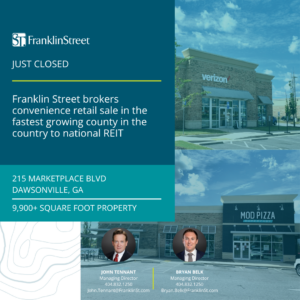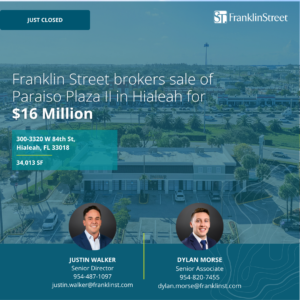ORLANDO—As a cohesive metropolitan region, the Tampa-Orlando Corridor now is as large as the Atlanta metro area, a panelist said at Thursday’s RealShare Central Florida conference here. That portends new opportunities for growth, as the region becomes a prime target for corporate relocations and broader opportunities for commercial real estate that were unheard of before the Great Recession.
The differences in the two markets work out in Florida’s favor, said Larry Richey, senior managing director and Florida market leader for Cushman & Wakefield. Atlanta’s market is spread out over 20 counties, including one all the way over in Alabama. The Central Florida market, on the other hand, is contained in 12 to 15 counties tightly packed from coast to coast. Another key point, he said, is that Atlanta is the nation’s 12th-largest television market. Tampa-St. Petersburg by itself is the 13th-largest, not including Orlando’s TV market, which extends across to Daytona Beach and down to Melbourne and also is in the top 20.
While Atlanta always will be considered a top-tier “gateway” city, the Tampa-Orlando corridor is poised to challenge it in economic prominence. Tampa-Orlando already is doing a better job in the growth of jobs, population and retail development, Richey added.
“We are where Atlanta was in the early ’90s,” Joshua Harris, director of the Dr. P. Phillips Institute for Research and Education in Real Estate at the University of Central Florida, said on another panel at the RealShare event, where more than 200 commercial real estate professionals gathered atop Downtown Orlando’s Citrus Center.
At the outset of the conference among power players in commercial real estate, Tim O’Connorwas feted with the RealShare Lifetime Achievement Award. O’Connor plans to retire at the end of the year as senior vice president and regional manager for NorthMarq Capital, but he admitted colleagues are begging him to stay on in some capacity—perhaps as a consultant.
Citing his firm’s growth from the early years, O’Connor remarked, “Somehow I don’t think the government created those jobs.”
Veteran players in Central Florida’s commercial real estate market were largely bullish on the region’s prospects—now just more than five years after the so-called “end” of the Great Recession.
The Tampa-Orlando Corridor’s best bet for high-wage job growth over the next decade rests on the burgeoning technology and manufacturing sectors, said Thomas Chatmon Jr., executive director of the Downtown Orlando Community Redevelopment Agency. “We need to embrace that market and grow it,” he advised, noting that Orlando is too reliant on the service sector.
“There is a sea change coming,” Chatmon said. “In 50 years, the biggest company in Downtown Orlando will be someone you’ve never heard of.”
Added Andrew Wright, CEO and managing partner of Franklin Street: “Orlando is vying with Austin and Charlotte as the place to be over the next decade.”
RealShare panelist Larry Richey, senior managing director and Florida market leader for Cushman & Wakefield, surprised some guests with a prediction that Orlando will become a major distribution hub in the global supply chain as African nations supplant China as the world’s leader in manufacturing.
“All of the major US ports closest to Africa are in Florida,” Richey noted.
Among other observations of the day’s panelists: Liquidity is coming back into the CRE loan market, demand for industrial buildings is high as long as strong functional utility is present, new office-space development along the Interstate 4 Corridor has lagged behind the rest of the country until a surge in the first quarter of this year, and nearly all new multifamily development is ignoring the “workforce element”—people such as nurses, teachers and firefighters earning between $30,000 and $45,000 a year.
“Cash sitting on the sidelines today is unprecedented,” said David Murphy, senior vice president for industrial properties of CBRE.
As is true in much of the nation, Tampa’s and Orlando’s central business districts now are more attractive to developers than suburban areas. This is a stark reversal of the trend of 20 to 30 years ago, when suburbia was the place to be. Suburban malls and office buildings have significantly higher vacancy rates than those downtown, including Orlando’s CBD, where occupancy is at 91 percent, said Paul Ellis, group president for CNL Commercial Real Estate. Harris pointed to Maitland Center, just north of Orlando, as a prime example of the trend Ellis cited.
“With rents at $30 per square foot, developers are thinking it’s time to start building again,” said Ellis. “Start-ups and tech companies are looking at Downtown…Millennials want to live and work Downtown.”
As a rule, the panelists agreed, developers are most attracted to areas where local governments are taking proactive steps to enhance the quality of their infrastructure.
“Investors like to invest in cities that invest in themselves,” one expert said.
Keeping investors wary, however, is the fact that some $450 billion in commercial mortgage-backed securities is coming due between now and 2017.
Nevertheless, “People want to come here,” said Cynthia Shelton, director of investment sales for Colliers International Central Florida. “They vacation here, so they remember it.”



